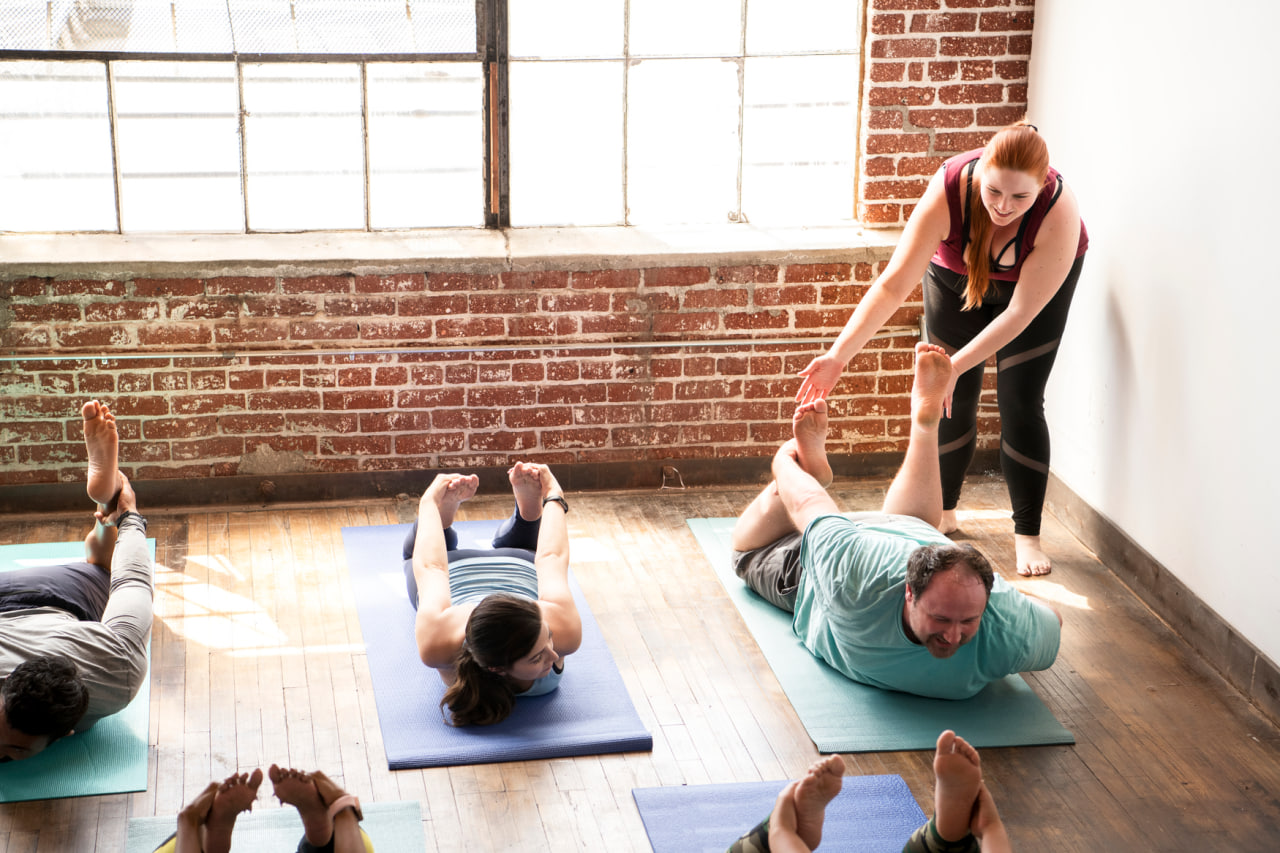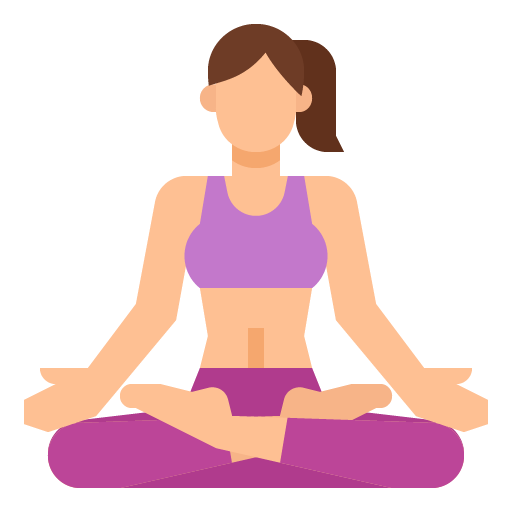Book Appointment Now

How to Start a Yoga Routine: A Beginner’s Guide to Your First Class
Yoga is a transformative practice that can enhance your physical, mental, and emotional well-being. Whether you’re looking to improve flexibility, reduce stress, or simply try something new, yoga offers a diverse range of benefits. However, if you’re new to the practice, it can be a little intimidating to take the first step. With so many different styles, classes, and poses, where do you even begin?
In this beginner’s guide, we’ll walk you through how to start a yoga routine, from what to expect in your first class to tips for making the most out of your practice. Whether you’re planning to take a class in a studio or begin practicing at home, this guide will help you feel prepared and confident as you embark on your yoga journey.
1. Set Your Intentions
Before you even step onto the mat, it’s important to understand why you want to practice yoga. Having clear intentions can help you stay motivated and focused on your journey. Your reasons for starting yoga might vary—some common goals include:
- Improving flexibility: If you’ve been experiencing tightness in your body or want to increase your range of motion, yoga can be a great way to stretch and lengthen your muscles.
- Relieving stress: Yoga is renowned for its ability to reduce anxiety, calm the mind, and promote relaxation through breathwork and mindfulness.
- Building strength: Yoga doesn’t just stretch the body—it also tones and strengthens muscles, helping you build a solid foundation for overall physical fitness.
- Enhancing focus and mindfulness: Yoga teaches you to be present in the moment, helping you reduce mental clutter and increase mental clarity.
Think about what you want to achieve with yoga and remind yourself of these intentions throughout your practice. Whether you’re aiming for physical benefits or looking to improve your mental state, your goals will guide you through the process.
2. Choose the Right Yoga Style
There are many different styles of yoga, and each one has its unique focus and benefits. As a beginner, you’ll want to choose a style that aligns with your goals, fitness level, and personal preferences. Here are a few popular styles to consider:
- Hatha Yoga: A gentle, slower-paced style that focuses on basic postures and alignment. Hatha classes are often ideal for beginners because they provide clear instructions and help you build a solid foundation.
- Vinyasa Yoga: A more dynamic style that links breath with movement. Vinyasa classes typically flow from one posture to the next, and they can range from slow and gentle to fast-paced and challenging.
- Yin Yoga: A slower, more meditative practice that involves holding postures for longer periods (3-5 minutes) to stretch the deep connective tissues. Yin yoga is perfect if you’re looking for a deep stretch and relaxation.
- Restorative Yoga: A calming and therapeutic practice that uses props like blankets, bolsters, and blocks to support your body in passive poses. Restorative yoga is excellent for stress relief and deep relaxation.
- Power Yoga: A more athletic, strength-building form of yoga that focuses on building endurance and muscle strength. Power yoga is a great option if you’re looking for a more intense workout.
If you’re unsure, starting with a Hatha or Gentle Vinyasa class is a great way to ease into yoga. Many studios also offer “Beginner” or “Introductory” classes that are specifically designed for newcomers.
3. Find a Class or Start at Home
One of the most significant decisions you’ll need to make is whether you want to attend an in-person yoga class or begin your practice at home. Here are the pros and cons of each option:
In-Person Classes
- Pros:
- You’ll receive hands-on adjustments and guidance from experienced instructors.
- The community environment can help keep you motivated and provide a sense of belonging.
- You’ll have access to a variety of props, such as blocks, straps, and bolsters, that can help you feel supported and comfortable in your poses.
- Most studios offer beginner-friendly classes, so you don’t have to worry about feeling out of place.
- Cons:
- It can be difficult to find time to attend regular classes, especially if you have a busy schedule.
- Class schedules might not always fit into your day-to-day routine.
Practicing at Home
- Pros:
- Flexibility to practice whenever and wherever you want.
- You can start with free online resources or apps to get a sense of what yoga is like before committing to a class.
- No need to worry about rushing to class or feeling self-conscious in front of others.
- Cons:
- You may not receive the same level of guidance as you would in a class, which could lead to improper form or injury if you’re not careful.
- It can be easy to get distracted or skip your practice when you’re at home.
If you’re just starting out, it might be a good idea to attend a few classes in person to get familiar with the basics, and then move to home practice once you feel more comfortable with the movements and terminology.
4. Prepare for Your First Class
When you’re ready to attend your first yoga class, a little preparation can go a long way. Here’s what you’ll need to get started:
- Clothing: Wear comfortable, breathable clothing that allows for easy movement. Avoid overly loose clothes that may get in the way, and opt for fitted clothes like leggings, tank tops, or T-shirts. Most people practice yoga barefoot, but if you prefer, you can wear non-slip socks.
- Yoga Mat: A good quality yoga mat provides grip and support. Some studios provide mats, but if you’re practicing at home or prefer your own mat, invest in a non-slip, cushioned yoga mat.
- Props: Some classes may require props like blocks, straps, or blankets, but most studios will have them available for you to use. If you’re practicing at home, you can improvise with household items like cushions, towels, or a sturdy belt.
- Water: Bring a water bottle to stay hydrated, especially if you’re attending a more vigorous class.
It’s also a good idea to arrive a few minutes early so you can settle in, meet the instructor, and get familiar with the studio space. Yoga is all about mindfulness and relaxation, so take a deep breath and remember that it’s okay to be a beginner.
5. Focus on the Basics: Breath, Alignment, and Mindfulness
When you step onto the mat, there are three fundamental elements of yoga to keep in mind:
- Breath: Yoga is all about the breath. The breath is your anchor, and it guides your movements. Take slow, deep breaths through your nose (called Ujjayi breath) to help focus your mind and bring a sense of calm to your practice.
- Alignment: Proper alignment is essential in yoga to avoid injury and maximize the benefits of each pose. Focus on maintaining a straight spine, engaging your muscles, and ensuring that your knees and joints are properly aligned.
- Mindfulness: Yoga is a practice of being present. Rather than focusing on perfection, pay attention to how your body feels in each pose and stay in the moment. It’s okay if you don’t look like the instructor or others in the class—yoga is about listening to your own body and doing what feels right for you.
In your first class, focus on learning the basic postures, listening to your body, and staying present. Over time, you’ll gain more confidence and fluidity in your practice.
6. Consistency Is Key
Like any new activity, the more consistently you practice yoga, the more benefits you’ll experience. As a beginner, it’s important to practice regularly, but that doesn’t mean you have to practice every day. Start with 2-3 sessions a week, gradually increasing the frequency as you become more comfortable.
Consistency will help you build strength, improve flexibility, and develop a deeper understanding of the practice. If you’re struggling to find motivation, consider setting small goals, such as attending one class per week or practicing at home for 10 minutes every morning.
7. Enjoy the Journey
Remember that yoga is a journey, not a destination. It’s not about achieving the perfect pose or mastering complicated movements; it’s about connecting with yourself, exploring your body, and growing both physically and mentally. Celebrate your progress, no matter how small, and allow yourself to enjoy the process without judgment.
Every practice is a new opportunity to learn, grow, and deepen your connection to your body and mind. So, take it one breath at a time, and embrace the journey ahead.
